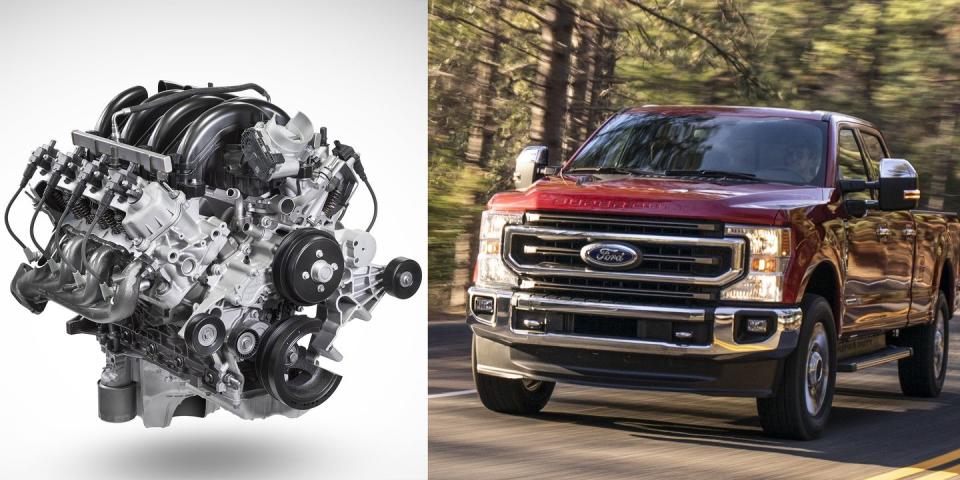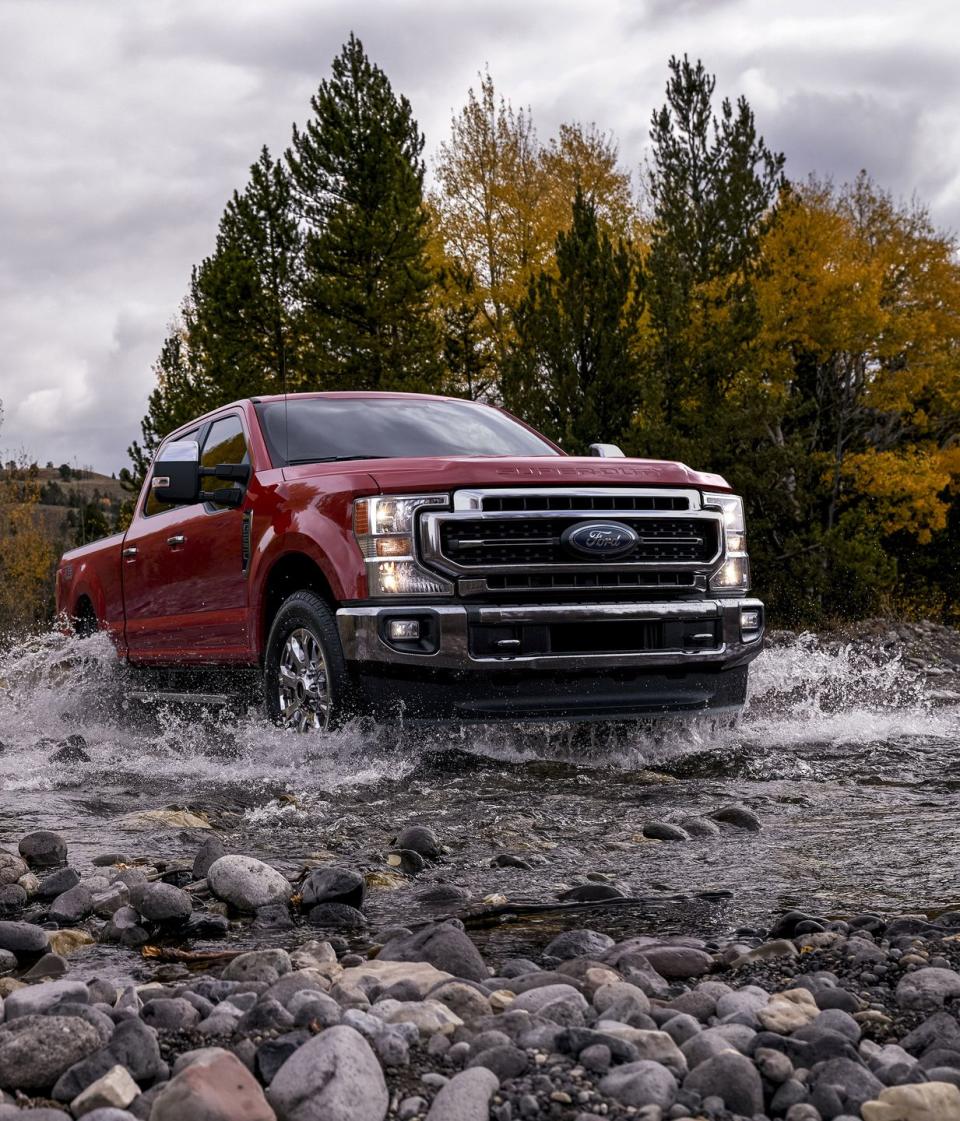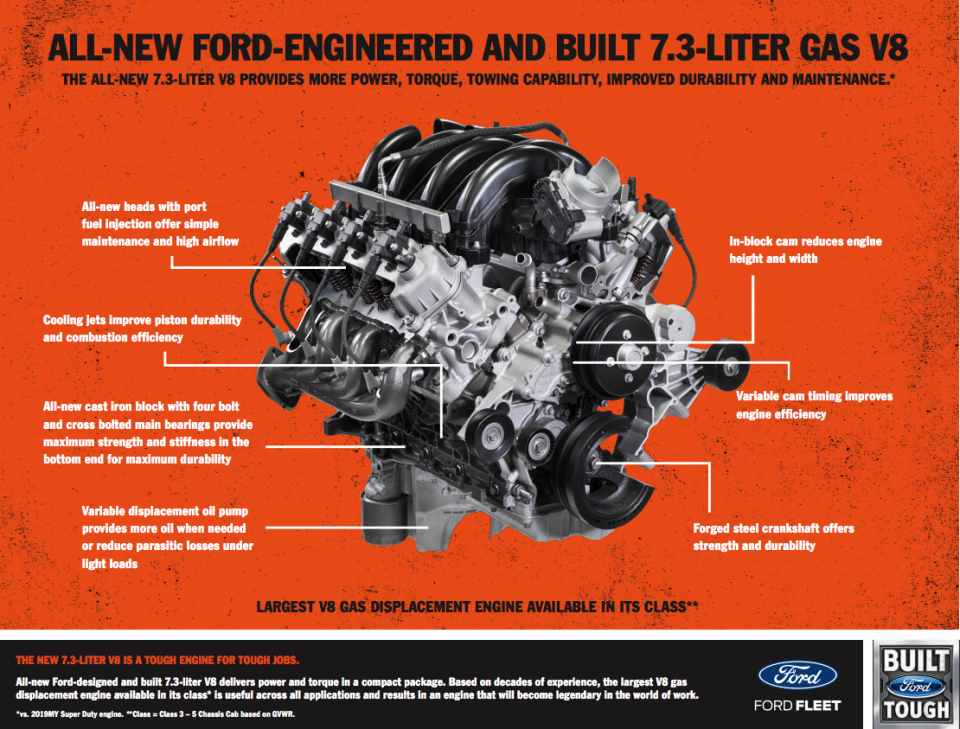Why Ford Made a New 7.3-Liter Gas Pushrod V8 in 2019

Ford, the company that only sells its compact Ranger with a four-cylinder and whose flagship F-150 engine is a twin-turbo V6, has created a new 7.3-liter V-8. With pushrods. And the company's engineers did it for fuel economy.
This might seem odd to you. After all, the pushrod V-8 is one of the oldest engine designs in the business-Ford started building them in the early 1930s. And while GM and Fiat Chrysler have continually offered gas-powered pushrod V-8s, outside of crate motors, Ford phased them out around 20 years ago. Until the 2020 Super Duty debuted last week, the only new pushrod V-8 Ford offered in a production vehicle was the 6.7-liter Power Stroke diesel.

A new pushrod V-8, let alone one displacing a hearty 7.3 liters, might seem backwards to you. But it isn't. We talked to Joel Beltramo, manager for V-8 gas engines at Ford, about why a big pushrod motor makes sense here.
Beltramo pointed out that most vehicles with a gross vehicle weight rating (GVWR) of under 8500 pounds cruise around without carrying or towing much weight at all. That means they don't use much sustained horsepower. By contrast, vehicles with a GVWR over 8500 pounds tend to tow and haul a lot, which means they're using a lot of their horsepower a lot of the time.
In vehicles with 14,000-plus-pound GVWRs-like the Ford Super Duty-Beltramo told us its critical for an engine to operate at peak power with an optimal air-fuel ratio (stoichiometric efficiency). From there, Ford worked backwards.
"We built a map of where an engine, can run stoichiometric air-fuel without a bunch of spark retard," Beltramo said. "That led us to a torque-per-liter value and a power-per-liter value, [which] knowing that, boxed us to 7.3 liters."
For fuel efficiency's sake, Ford engineers determined they wanted the engine to generate peak power at what Beltramo considers "relatively low" RPMs. "That's what led us to a pushrod two-valve. It really is the optimum solution for the over 14,000-pound [segment]."
Typically, a pushrod engine makes lots of torque at low RPMs, while an overhead-cam engine-like the 5.0-liter Coyote in the Mustang-does its best work from the middle to the top of the rev range. When towing/hauling a big load, a truck's engine needs to be making peak power, and if it's doing so at relatively low RPMs, it won't use a ton of gas
"If you used [the 7.3-liter] in an F-150 or something, it would not return the kind of fuel economy at light load as some of our other engine offerings that we deploy in that vehicle," Beltramo said. "There would be a hit for the displacement. But when you start talking about running day-in day-out, at high weights...the displacement brings a big fuel-economy benefit."


 Yahoo Autos
Yahoo Autos 